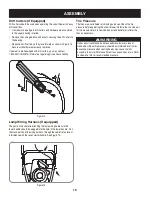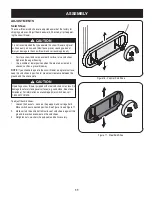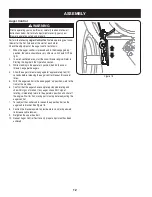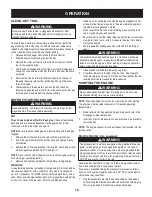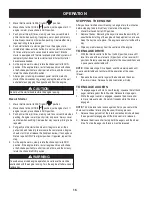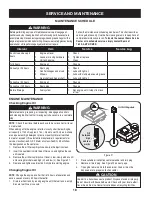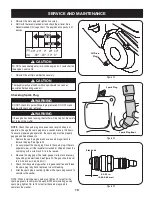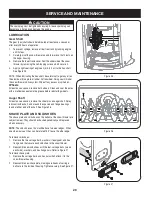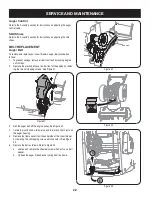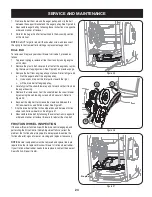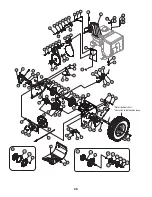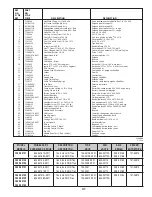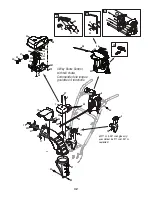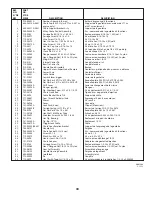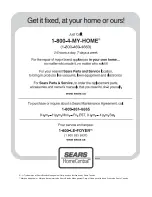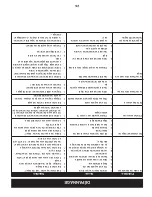
24
OFF-SEASON STORAGE
If the snowthrower will not be used for 30 days or longer, or if it is the end of the snow season when the last possiblity of snow is gone, the equip-
ment needs to be stored properly. Follow storage instructions below to ensure top performance from the snow thrower for many more years.
PreParIng engIne
Engines stored over 90 days need to be drained of fuel to prevent
deterioration and gum from forming in fuel system or on essential
carburetor parts. If the gasoline in your engine deteriorates during
storage, you may need to have the carburetor, and other fuel system
components, serviced or replaced.
Remove all fuel from tank by running engine until it stops from
1.
lack of fuel.
Change the oil.
2.
Remove the spark plug and pour approximately a
3.
1 ounce (30 ml)
of clean engine oil into the cylinder. Replace spark plug and crank
it slowly to distribute oil.
Clean debris from around the engine and the muffler. Touch up
4.
any damaged paint, and coat other areas that may rust with a light
film of oil.
Store in a clean, dry and well ventilated area away from any ap-
5.
pliance that operates with a flame or pilot light, such as a furnace,
water heater, or clothes dryer. Also avoid any area with a spark
producing electric motor, or where power tools are operated.
If possible, also avoid storage areas with high humidity, because
6.
that promotes rust and corrosion.
Keep the engine level in storage. Tilting can cause fuel or oil
7.
leakage.
PreParIng SnOWTHrOWer
When storing any type of power equipment in a poorly ventilated
•
or metal storage shed, care should be taken to rustproof the
equipment. Using a light oil or silicone, coat the equipment,
especially any chains, springs, bearings and cables.
Clean snowthrower thoroughly.
•
Lubricate as instructed in the Maintenance section of this manual.
•
Refer to engine manual for correct engine storage instructions.
•
Store the snow thrower in a clean, dry area.
•
WarnIng
Never store snow thrower with fuel in tank indoors or in poorly
ventilated areas, where fuel fumes may reach an open flame, spark
or pilot light as on a furnace, water heater, clothes dryer or gas
appliance.

